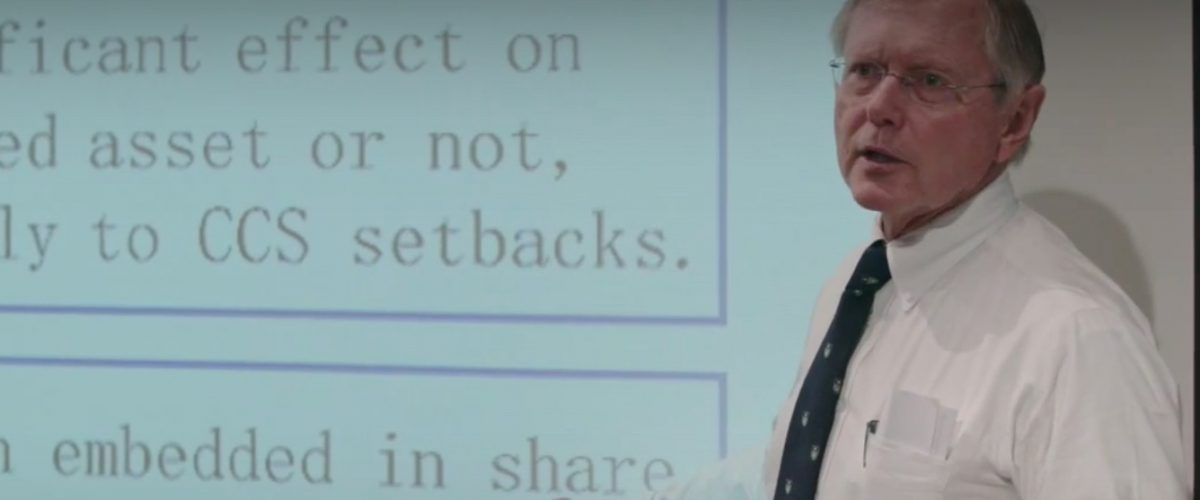
Professors John Byrd and Elizabeth Cooperman had a paper presentation at the 1st
Global Conference on Stranded Assets and the Environment” at Queen’s College,
University of Oxford on September 24, 2015.
The University of Oxford’s Smith School of Enterprise and the Environment invited researchers and interested practitioners to a major academic conference on stranded assets and the environment. As the first international and interdisciplinary conference on the topic, the event is expected to lead to a special issue in a leading journal and result in new research projects, networks, and partnerships.
The paper, “Ecological Limits, Technology, and Coal” examines investor reactions to Carbon Capture and Sequestration technology breakthroughs and setbacks. Below is a summary of the paper by Co-Author John Byrd.
Scientists estimate that to avoid raising global temperatures above 2oC that carbon dioxide emissions for the next 40 years cannot exceed about 560 gigatons. Today known fossil reserves hold the equivalent of about 3,000 gigatons of CO2. Clearly, given current technology extracting and burning these reserves would create a climate disaster. Since coal produces the most carbon emissions per BTU, it is the best candidate to leave in the ground. This means that the coal industry has a bleak future if governments begin implementing effective climate change policies.
This scenario changes if cost-effective Carbon Capture and Sequestration (CCS) technology can be developed. CCS would capture CO2 as it is emitted so it could be stored or used in other industrial processes. So CCS is a lifeline for the coal industry.
There is concern that investors do not yet include the risk of stranded assets in their valuations of energy companies. The Carbon Bubble effect was identified by Carbon Tracker, a UK NGO doing research in climate change. It is also part of the argument made by advocates of fossil fuel divestment.
We examine whether investors in coal companies react to news about CCS technology breakthroughs and setbacks. We study stock market reactions for a sample of 9 major North American coal production companies during 2011 to 2015. The sample is small because during this period several companies went bankrupt.
We find on average significant excess positive stock price returns to CCS breakthroughs, but no significant reaction on average to CCS setbacks. The positive response to CCS breakthroughs is consistent with investors seeing CCS technology as a way to avoid stranded asset risk. The non-reaction by investors to bad news for CCS, along with dramatically falling prices for coal company stocks over this period, suggests that, contrary to the carbon Bubble concern, investors have embedded stranded asset risk into their valuations of these companies.
The authors thank the JPMorgan Chase Commodity Center at the Business School and the Tom and Jane Petrie Faculty Development Fund for a summer research grant to pursue this project. The authors recently published paper can be found here.


